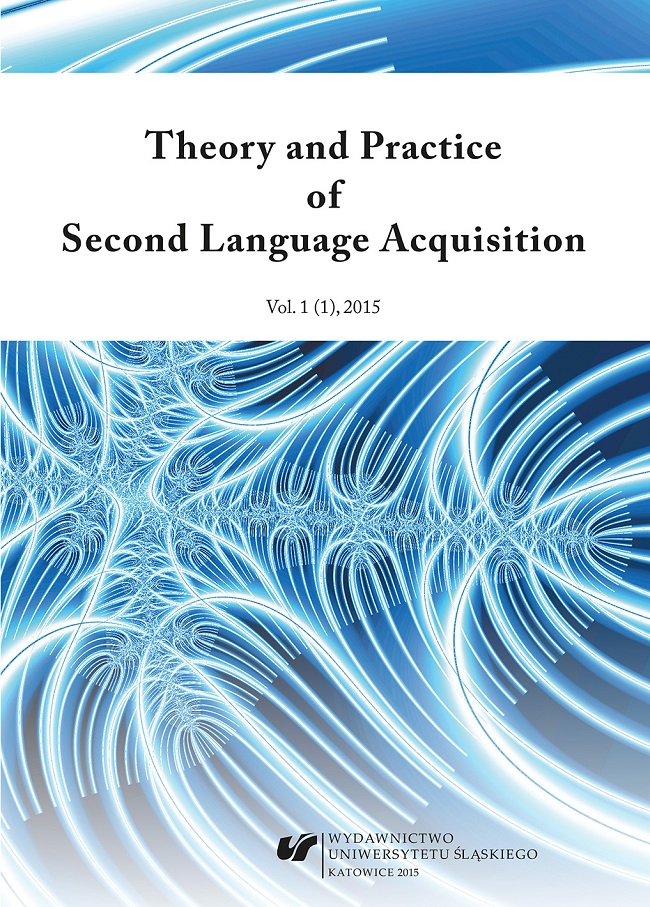Brookfield, S. (1990) Building trust with students. In A. B. Knox (ed.) The Skillful Teacher (pp. 163-176). San Francisco, CA: Jossey-Bass.
Google Scholar
Brookfield, S. (1995) Seeing ourselves through our students’ eyes. In Becoming a Critically Reflexive Teacher (pp. 92-223). San Francisco, CA: Jossey-Bass.
Google Scholar
Brookfield, S. (2006).Authenticity and power. In P.A. Cranton (ed.) Authenticity in teaching: New directions for adult and continuing education 111 Fall (pp.5-16)
Google Scholar
Cassidy, W. and Bates, W. (2005) Drop-outs and push-outs: Find hope at a school that actualizes the ethic if care, American Journal of Education, 112, 1, 66-102.
Google Scholar
Cranton, P., and Carusetta, E. (2004) Perspectives on authenticity in teaching. Adult Education Quarterly, 55, 1, 5-22.
Google Scholar
Darling-Hammond, L. (1990) Instructional policy into practice: The power of the bottom over the top. Educational Evaluation and Policy Analysis, 12, 233-241.
Google Scholar
Dirkx, J. M. (2006) Authenticity and imagination. New Directions for Adult and Continuing Education, 111, 27-39.
Google Scholar
Dornyei, Z. (2005).The Psychology of the Language Learner: Individual Differences in Second Language Acquisition. Mahwah, NJ: Lawrence Erlbaum Associates, Inc.
Google Scholar
Dornyei, Z., MacIntyre, P. M., and Henry, A. (2015) Motivational Dynamics in Language Learning. Bristol, U.K.: Multilingual Matters.
Google Scholar
Gee, J. P. (2001) Identity as an analytic lens for research in education. Review of Research in Education, 25, 99-125.
Google Scholar
Giddens, A. (1991) Modernity and Self-Identity. Cambridge: Polity Press.
Google Scholar
Gregersen, T. and MacIntyre, P. (2014) Capitalizing on Individuality: From Premise to Practice. Bristol, U.K.: Multilingual Matters.
Google Scholar
Grimmett, P. P., & Neufeld, J. (1994) Teacher Development and the Struggle for Authenticity. New York: Teachers College Press.
Google Scholar
Hansen, T. (2001) Reflections on the manner in the teaching project, Journal of Curriculum Studies, 33, 6, 729-735.
Google Scholar
Hargreaves, A. (1998) The emotional practice of teaching. Teaching and Teacher Education, 14, 8, 833-854.
Google Scholar
Hogg, M., and Abrams, D. (1998) Social Identifications: A Social Psychology of Intergroup Relations and Group Processes. London: Routledge.
Google Scholar
Horwitz, E. K. (1988) The beliefs about language learning of beginning university foreign language students. The Modern Language Journal, 72, 283-294.
Google Scholar
Horwitz, E. K. (1996) Even teachers get the blues: Recognizing and alleviating language teachers’ feelings of foreign language anxiety. Foreign Language Annals, 29, 365-372.
Google Scholar
James, J. H. (2012) Caring for others: Examining the interplay of mothering and deficit discourses in teaching, Teaching and Teacher Education, 28, 2, 165-173.
Google Scholar
Kreber, C., Klampfleitner, M., McCune, V., Bayne, S. and Knottenbelt, M. (2007) What do you mean by ‘authentic’? A comparative review of the literature on conceptions of authenticity. Adult Education Quarterly, 58, 1, 22-43.
Google Scholar
Lave, J. and Wenger, E. (1991) Situated Learning: Legitimate Peripheral Participation. Cambridge: Cambridge University Press.
Google Scholar
Laursen, P. F. (2004) Den autentiska Lararen. Bli en bra och effektiv undervisare—omdu vill. [The authentic teacher. Become a good and effective educator—if you want to]. Stockholm, Sweden; Liber AB.
Google Scholar
Malm, B. (2008) Authenticity in teachers’ lives and work: Some philosophical and empirical considerations. Scandinavian Journal of Educational Research, 52, 4, 373-386.
Google Scholar
Morgan, B. (2002) Critical practice in community-based ESL programs: A Canadian perspective. Journal of Language, Identity, and Education, 1, 141-162.
Google Scholar
Moustakas, C. (1967) The Authentic Teacher: Sensitivity and Awareness in the Classroom. Cambridge, MA: Howard A. Doyle Publishing.
Google Scholar
Olsen, B. (2008) Teaching What They Learn, Learning What They Live. Boulder, CO: Paradig Publishers.
Google Scholar
Palmer, P. (1990) The Active Life: A Spirituality of Work, Creativity and Caring. San Francisco: Jossey-Bass.
Google Scholar
Palmer, P. (2001) Now I become myself. Yes Magazine, blog post, 31 May accessed ddmmyyyy http://www.yesmagazine.org/issues/working-for-life/now-i-become-myself.
Google Scholar
Palmer, P. (2007) The Courage to Teach: Exploring the Inner Landscape of a Teacher’s Life. San Francisco, CA: Jossey-Bass.
Google Scholar
Quinn, R. E., and Anding, J. M. (2005) An interview with Robert E. Quinn entering the fundamental state of leadership: Reflections on the path to transformational teaching. Academy of Management Learning & Education, 4 (4), 487-495.
Google Scholar
Sachs, J. (2005) Teacher education and the development of professional identity: Learning to be a teacher. In P. Denicolo and M. Kompf (eds.) Connecting Policy andPractice: Challenges for Teaching and Learning in Schools and Universities (pp. 5-21). Oxford: Routledge.
Google Scholar
Sfard, A. and Prusak, A. (2005) Telling identities: In search of an analytic tool for investigating learning as a culturally shaped activity. Educational Researcher, 34 (4), 14-22.
Google Scholar
Simon, R. I. (1995) Face to face with alterity: Postmodern Jewish identity and the eros of pedagogy. In J. Gallop (ed.) Pedagogy: The question of impersonation (pp. 90-105). Bloomington: Indiana University Press.
Google Scholar
Tajfel, H. (1978) Differentiation Between Social Groups: Studies in the Social Psychology of Intergroup Relations. London: Academic.
Google Scholar
Taylor, C. (1991) The Ethics of Authenticity. Cambridge, MA: Harvard University Press.
Google Scholar
Tully, K. and Bolshakov, V. Y. (2010) Emotional enhancement of memory: How norepinephrine enables synaptic plasticity. Molecular Brain, 13 May, accessed 1 March 2015. http://www.molecularbrain.com/content/
Google Scholar
Varghese, M., Morgan, B., Johnston, B. and Johnson, K. (2005) Theorizing language teacher identity: Three perspectives and beyond. Journal of Language, Identity, and Education, 4 (1), 21-44.
Google Scholar
Wiggins, A. (2010) The courage to seek authentic feedback. Education Digest, 30, 19-21.
Google Scholar
Wright, C. (2013) Authenticity in teaching and leadership. Journal of Accounting and Finance, 13 (2), 36-44.
Google Scholar
Zemblyas, M. (2003) Caring for teacher emotion: Reflections on teacher self development. Studies in Philosophy and Education, 22, 103-125.
Google Scholar



 10.31261/tapsla
10.31261/tapsla